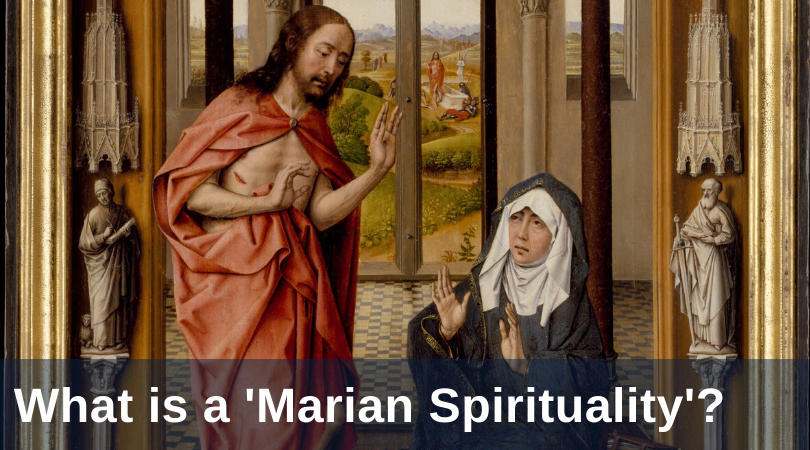
Queen of Heaven, rejoice. Alleluia
For he whom you did merit to bear. Alleluia
Has risen as he said. Alleluia
Pray for us to God. Alleluia
Rejoice and be glad, O Virgin Mary. Alleluia
For our Lord has truly risen. Alleluia
Let us pray.
O God, who by the Resurrection of your Son
granted joy to the whole world,
grant we beseech thee
that through the intercession of the Virgin Mary his Mother
we may obtain the joys of eternal life. Amen.
“Behold your Mother” (John 19:26). With these words, Christ gave his Mother to the whole world, and ever since, Mary has been a key figure in Christian devotion. From hymns of praise to prayers for her intercession, Christians throughout the world and the centuries have expressed their love for our Mother.
Patristic fathers saw in Mary the “New Eve,” the one who would untie the knot of Eve’s disobedience with her perfect obedience to God. Her ‘yes’ at the Annunciation shows her willingness to enter completely into God’s plan for redemption, and points to the special place she holds in this story of human salvation. From this natural veneration of Mary as the Mother of God sprang an increasing devotion to her as an intercessor, the Mother of Mercy. As “Help of Christians,” however, Mary does not hold any supernatural power of her own, but stands united with Christ in perfect obedience to God. Indeed, as the “first among believers,” she offers the model for all Christian lives in her openness to God’s word and her total belief in her Son.
As the Mother of God, Mary holds a special place in the Christian tradition: her example has a special power for believers, and her intercession is a powerful means of consolation. Nevertheless, her entire life points to Christ. Thus, to speak of a ‘Marian spirituality’ is not merely to consider the practices of traditional prayer or devotion. Devotion to Mary seeks not only to think of Our Lady and to honor her for her unique place in salvation history, but to imitate her virtues and to follow her example of conformity to Christ. The confidence of a Christian faith comes from our desire to be united to Christ, a unity which Mary lived in her whole life. When we approach the Blessed Mother, then, we approach her with the desire that our devotion to her might inflame our hearts and provide an occasion for God’s grace to conform us ever more closely to her Son.
We approach Mary with our own unique stories and journeys of faith, and we draw strength from her example. In times of mourning, we draw courage from her faithful witness at the foot of the Cross, and consolation from the image of a Mother cradling the body of her dead Son. In times of rejoicing and hope, we turn to her glorious hymn of praise, the Magnificat, to teach us the words to praise God for His goodness. In times of ordinary life, of living into the monotony of daily life in the home, at school, or with family, we turn to her example as a humble woman who “[pondered] all these things in her heart” (see Luke 2:19, 51), allowing God’s grace to continually enrich the ordinary moments of life.
As we live into this Easter season in a time of uncertainty and fear, we might consider how a devotion to Mary could provide some hope. As we begin to understand our own desire for community, to live into the aching losses of things both trivial and gigantic, Christ continues to invite us to “Behold your Mother.” A Marian spirituality does not require that we have Mary’s humble, perfect obedience immediately; indeed, it does not require anything more than the willingness to contemplate Mary’s life and to pray for the grace to desire her faithful obedience. Mary, who lived so closely to her Son, models an unbroken faith in God; even in darkness and uncertainty, she trusts in God and finds joy in the Resurrection. May we all imitate the example of Mary in faith and hope, and allow our devotion to her to bring us ever closer to her Son.
Like what you read? Submit your email below to have our newest blogs delivered directly to your inbox each week.
Featured image: Juan de Flandes, Christ Appearing to His Mother (1496); courtesy of the Metropolitan Museum of Art; public domain.


